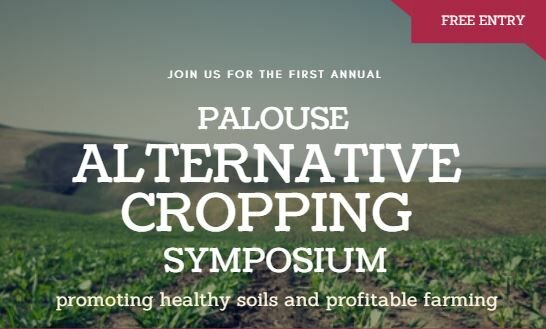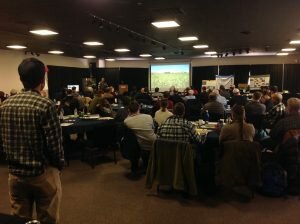Follow the link for the House Bill Report HJM 4014.
Here’s the complete text from House Joint Memorial 4014:
TO EACH MEMBER OF CONGRESS FROM THE STATE OF WASHINGTON, AND TO JAY INSLEE, THE GOVERNOR OF WASHINGTON STATE, AND TO THE DIRECTORS OF THE PACIFIC NORTHWEST AND ROCKY MOUNTAIN RESEARCH STATIONS OF THE UNITED STATES FOREST SERVICE, AND TO THE UNITED STATES FOREST SERVICE REGION 6 REGIONAL FORESTER, AND TO THE UNITED STATES FOREST SERVICE DEPUTY CHIEF FOR STATE AND PRIVATE FORESTRY, AND TO THE PRESIDENTS OF THE WASHINGTON STATE UNIVERSITY AND THE UNIVERSITY OF WASHINGTON, AND TO THE DIRECTORS OF THE WASHINGTON STATE DEPARTMENT OF ECOLOGY AND THE WASHINGTON STATE DEPARTMENT OF AGRICULTURE, AND TO THE WASHINGTON STATE COMMISSIONER OF PUBLIC LANDS:
We, your Memorialists, the Senate and House of Representatives of the State of Washington, in legislative session assembled,
respectfully represent and petition as follows:
WHEREAS, Biochar is a carbon rich solid produced for noncombustion purposes by the thermochemical conversion of organic matter; and
WHEREAS, An important coproduct of biochar production is energy in thermal, gaseous, electrical, and liquid fuel forms; and
WHEREAS, Biochar can be produced from many forms of organic matter including: Whole trees, residual forest materials, wood chips, seaweed, food processing waste, demolition waste, wheat straw, and many other forms of agricultural and municipal waste; and
WHEREAS, People working for the United States Forest Service, the Washington State University, the University of Washington, and the Washington State Department of Ecology have been researching the use of biochar and found that several potential markets exist for the product, including as agricultural soil amendments, reforestation treatments, pollution remediation, animal feed, and landscaping
material; and
WHEREAS, Forest health activities to thin forests, decrease fuel loads, and remove trees killed by insects and disease can be expensive because there are currently few markets for small roundwood and virtually no markets for residual material, such as tops and limbs; and
WHEREAS, Biochar provides a potential economic use for woody biomass that can help offset forest fuel reduction project costs, which means more acres can be treated; and
WHEREAS, Removing excess forest biomass for use as a feedstock for biochar can minimize the severity of wildfires; and
WHEREAS, The Agricultural Research Service has found that the addition of biochar to soils may increase soil carbon, soil nutrient content, and plant productivity; and
WHEREAS, Biochar can increase the economic value and productivity of Washington soils and benefit Washington farmers by reducing expenditures for irrigation and fertilizer while increasing soil pH and yields; and
WHEREAS, Designer biochars can be produced from different feedstocks with varying production techniques to enhance or diminish specific attributes; and
WHEREAS, Biochar is a porous material that retains water which can reduce drought risk and irrigation inputs to farms, urban landscaping, and recreational facilities; and
WHEREAS, United States Forest Service studies have found that biochar in soils attracts and holds water, increases ion exchange capacity, makes soil more porous, and enhances absorption of organic compounds, all of which enhance soil productivity and facilitate plant growth to reduce erosion and restore compacted, oxidized, and degraded soils; and
WHEREAS, Biochar can be used in filters, such as those used in water treatment facilities, and well-established markets exist for
activated carbon; and
WHEREAS, Biochar can be used for remediation projects to absorb pollutants destined for our wells, rivers, lakes, and oceans; and
WHEREAS, Biochar is modeled after “terra preta” a process used thousands of years ago in Brazil’s Amazon basin where indigenous people created plots of rich, fertile soils that continue to hold carbon today and remain nutrient rich; and
WHEREAS, Biochar can store carbon in the ground that may otherwise be released into the atmosphere from wildfires or decomposition; and
WHEREAS, Biochar can be fed to ruminants to increase weight gain, and its application can also reduce methane emissions from manure and compost piles; and
WHEREAS, Washington State is a national leader in the advancement of biochar research, development, and early commercialization; and
WHEREAS, The production, placement, and benefits of biochar can enhance rural economic development and employment;
NOW, THEREFORE, Your Memorialists respectfully affirm their support for the research efforts of the United States Forest Service, the Agricultural Research Service of the United States Department of Agriculture, the Washington State University, the Washington State Department of Ecology, and other institutions to produce biochar from the removal of wildfire fuel loads from the forest floor, waste agricultural products, and other waste biomass destined for landfills or combustion; and support the research of biochar as an animal feed, remediation tool, landscaping material, and soil amendment for forest and agricultural lands.
BE IT RESOLVED, That copies of this Memorial be immediately transmitted to Jay Inslee, the Governor of Washington State; the Directors of the Pacific Northwest and Rocky Mountain Research Stations of the United States Forest Service; the United States Forest Service Region 6 Regional Forester; the United States Forest Service Deputy Chief for State and Private Forestry; the Presidents of the Washington State University and the University Of Washington; the Directors of the Washington State Department of Ecology and the Washington State Department of Agriculture; the Washington State Commissioner of Public Lands; and each member of Congress from the
State of Washington.


